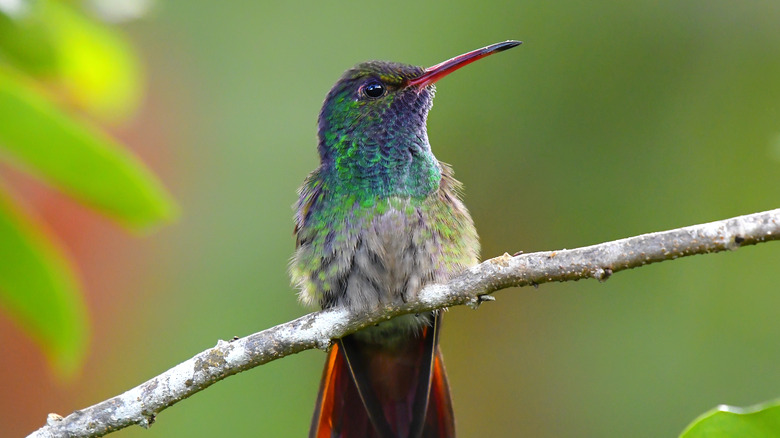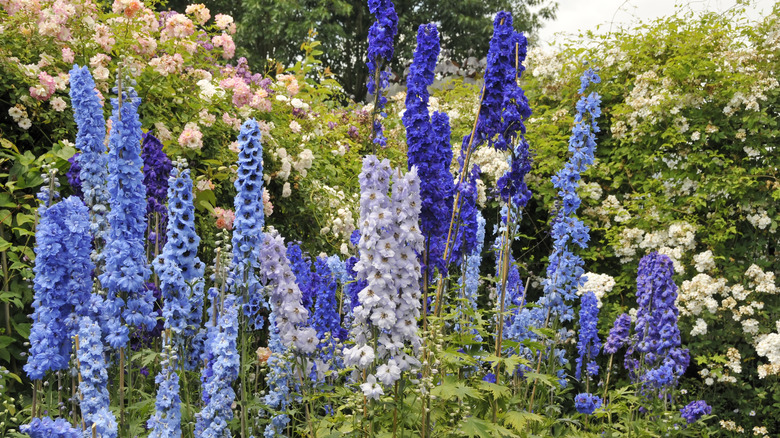Attract Hummingbirds To Your Garden With This Colorful Perennial Plant
The trill of a hummingbird is one of the most delightful sounds of the spring and summer months. These impressive little creatures spark delight and joy for many, and it's common to take great pride in knowing hummingbirds visit your garden. Hummingbirds are pollinators, so they also help flowers, fruits, and veggies to thrive. A great way to attract hummingbirds to your garden is by strategically planting the flowers they love to feed from, so this year, draw these stunning birds to your yard with colorful delphiniums.
Hummingbirds have extremely fast metabolisms and therefore need many sources of nectar, which delphiniums can supply. Delphinium plants provide essential nutrients for hummingbirds, and their tall height, ranging from 3 to 8 feet depending on species, makes them easily accessible for feeding. Delphiniums can also bloom multiple times a year, creating a food source each time. The plants' bright color helps them draw in hungry hummingbirds, and their hardiness makes them an excellent choice for gardens in a wide range of climates. The beautiful flower will have hummingbirds flocking to your yard throughout the warm-weather months.
How to attract hummingbirds with delphiniums
The best way to attract and nurture hummingbirds is to plant a variety of nectar sources that bloom at various times of the year. Delphiniums usually begin to bloom in early summer, with a second bloom in early autumn. Gardeners can create a hummingbird haven by supplementing the delphiniums with early spring and mid-summer bloomers, as well as a regularly cleaned hummingbird feeder for scarcer months.
Cultivating thriving delphinium plants that hummingbirds will love requires full sun and well-draining soil. Many gardeners use delphiniums as visually stunning border plants, but you can also plant them in beds or even containers. Delphiniums thrive in USDA hardiness zones 3 through 9, making them an excellent fit for most gardens throughout the United States. Hotter climates may call for more frequent watering, and cold climates call for more protection from the winter chill.
Water delphiniums at least once a week, especially in the first summer after you plant them. They may require less water in later years depending on your location. Taller varieties might require staking to stay upright, especially if you live in a windy area, and fertilizing will help ensure the health of the plants. If you'd like to encourage a second bloom, you can deadhead your delphiniums to their basal leaves. To protect the roots during winter, trim the plants back to about 6 inches in height after the first frost, and then add 2 to 3 inches of mulch on top of the soil.
It is important to note that while delphiniums attract hummingbirds, they are considered toxic to humans and animals. According to the University of Saskatchewan, ingesting these plants can cause gastrointestinal discomfort in humans. Please take this into consideration when deciding whether or not to plant delphiniums.

